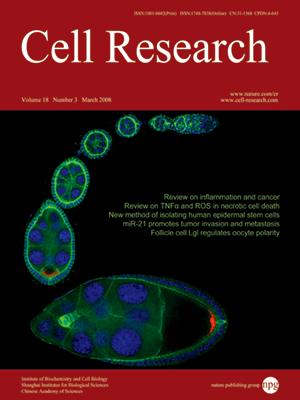
Volume 18, No 3, Mar 2008
ISSN: 1001-0602
EISSN: 1748-7838 2018
impact factor 17.848*
(Clarivate Analytics, 2019)
Volume 18 Issue 3, March 2008: 343-349
REVIEWS
TNFα and reactive oxygen species in necrotic cell death
Michael J Morgan, You-Sun Kim and Zheng-gang Liu
Cell and Cancer Biology Branch, Center for Cancer Research, National Cancer Institute, NIH, Bethesda, MD 20892, USA
Correspondence: Zheng-gang Liu(zgliu@helix.nih.gov )
Death receptors, including the TNF receptor-1 (TNF-RI), have been shown to be able to initiate caspase-independent cell death. This form of "necrotic cell death" appears to be dependent on the generation of reactive oxygen species. Recent data have indicated that superoxide generation is dependent on the activation of NADPH oxidases, which form a complex with the adaptor molecules RIP1 and TRADD. The mechanism of superoxide generation further establishes RIP1 as the central molecule in ROS production and cell death initiated by TNFα and other death receptors. A role for the sustained JNK activation in necrotic cell death is also suggested. The sensitization of virus-infected cells to TNFα indicates that necrotic cell death may represent an alternative cell death pathway for clearance of infected cells.
Cell Research (2008) 18:343-349. doi: 10.1038/cr.2008.31; published online 26 February 2008
FULL TEXT | PDF
Browse 1902


